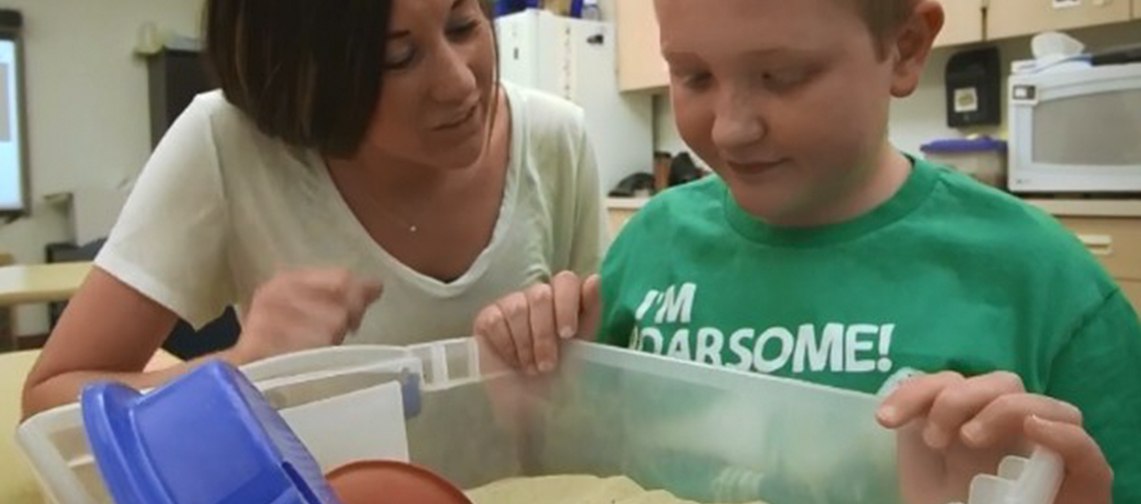Occupational Therapy

Monarch School’s Occupational Therapy (OT) Department is led by a Board Certified Occupational Therapist Director, and it consists of 16 therapists including Occupational Therapists, Registered, Licensed (OTR/L) and Certified Occupational Therapy Assistants-Licensed (COTA/L) who work together to evaluate and treat all students. In addition to collaborating with one another, they frequently co-treat with other disciplines at Monarch including Speech, Behavior, Academics, Art, Music & Recreational Therapy. This interdisciplinary collaboration enables them to share knowledge and help students practice and generalize skills in multiple settings with various professionals.
Upon intake and on an annual basis, Monarch School students receive individualized OT evaluations that focus on the domains of executive skills, visual/gross and fine motor, activities of daily living, leisure and work abilities, and sensory regulation skills. Evaluations are conducted using standardized tests, norm referenced tests and developmental checklists. The results of each student’s evaluation help to determine which of the three OT service treatment models (or which combination of models) is best for each student:
Direct Service: The direct specialized service utilizes individualized techniques and approaches with one student or small group of students, having frequent contact with them (up to 4 times a week) and can only be performed by an Occupational Therapist or an Occupational Therapy Assistant. The Direct service emphasis is on learning the skill utilizing interventions that are embedded with sensory input within at least one environment.
Monitoring Service: The monitoring service is essential for the student to receive as he or she generalizes the skill(s) that was mastered during direct service. The Occupational Therapist or Occupational Therapy Assistant’s expertise is utilized as the student participates in and practices the activities and skills within the classroom or a variety of environments. The student’s progress is monitored by an Occupational Therapist, through meetings with the educational team (intervention specialist, associate teacher, speech language pathologist, behavior specialist, recreational therapist, music therapist, and art therapist) on as needed basis and through observations. During the meeting, the specialized program (e.g. motor development, daily living skills) designed by the therapist is reviewed and feedback is discussed. The ongoing guidance and practice is essential for the student to succeed.
Consultation: The consultation service puts emphasis on the collaboration within an educational team where supports and ideas are generated whenever difficulties arise. Consultation service is advised when the student experiences no changes in performance areas, performance components or performance contexts as described by the Occupational Therapy Practice Framework: Domain and Process 2nd Edition. This model of service provides students with opportunities to practice and generalize learned skills in different situations and environments.
Regardless of the treatment model selected for a particular student, the OT Department provides appropriate sensory supports to help improve regulation of all students’ sensory systems – including auditory (noise), tactile (touch), visual (sight), olfactory (smell), gustatory (taste), proprioceptive (unconscious movement through joints and muscles), vestibular (inner ear, balance), and interoceptive (internal sensors near organs). A key to successfully providing these supports is the Department’s focus on building meaningful relationships with their students. OTs work diligently to build trust by setting expectations, learning who each student is as an individual, and providing “just right” challenges for each student.
The ultimate goal of the Occupational Therapy Department is to help each student master the skills and expectations needed to independently and confidently participate in everyday life activities, thereby achieving a sense of self-worth and self-sufficiency.